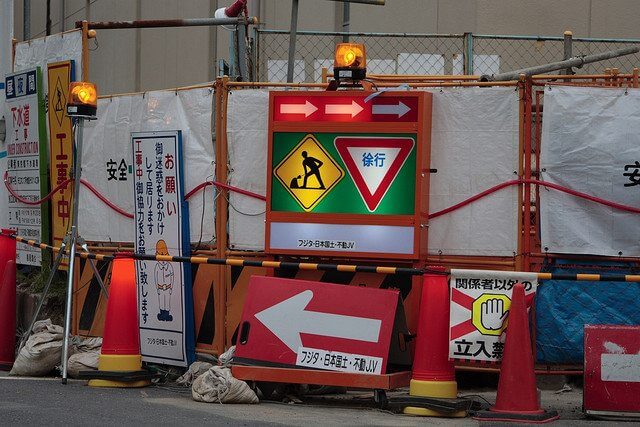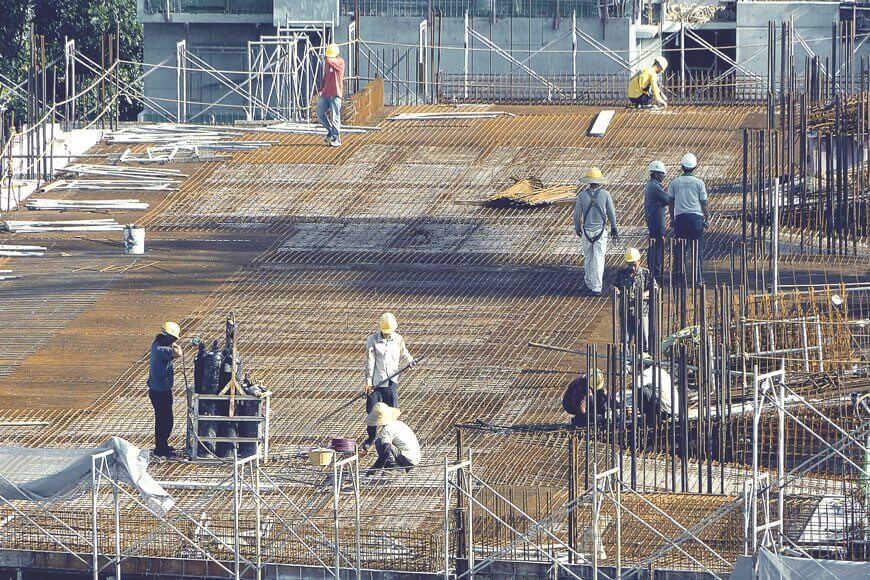Why is scheduling important in construction?
Scheduling is crucial to the success of a construction project. Proper scheduling guarantees the completion of the construction project on time and within budget through outlining how the tasks are executed, the pacing of the executed activities, as well as the methods and sequences in which the materials are delivered. Some principal points to note that illustrate the importance of construction scheduling:
- Having a construction schedule allows companies to see if the schedules set by the client are achievable or not.
- Scheduling assigns dates to project tasks and activities.
- It allows companies and contractors to estimate preliminary costs.
- The project schedule is used to prepare tenders and bid estimates.
- Scheduling enables the project manager and director to match equipment, materials, labour, and all other resources with tasks and activities over time, wherein the use of resources is optimised.
- Scheduling allows the sequencing of tasks that prepare the teams for the next activities that need executing.
- By sequencing tasks and activities for maximum worksite protection, safety performance is improved.
- Having a construction schedule lets the construction team set their goals and see the dates needed for them to be realised.
- Scheduling reduces downtime and production bottlenecks, thereby eliminating delays in the delivery of the entire project, making certain that a project is completed in the shortest time possible.
- A detailed construction schedule serves as a medium to monitor construction work progress, and to juxtapose actual work with the timetable to work out if the execution is proceeding competently.
- A detailed construction schedule can also be compared alongside the actual construction performance and achievements to apportion project delay liability caused by work strikes, owner change requests, and other unplanned events.

Because a construction project is fundamentally a multitude of smaller construction tasks, having a well-planned construction schedule can coordinate all these individual tasks and the people in charge to harmonise all these dynamic aspects of a construction site.
Guidelines for developing a good project schedule
There are a lot of simple scheduling practices in construction. But with larger and more complex projects, there is a need for more formal scheduling procedures. Having a detailed, handy, simple-to-use construction schedule means your suppliers know exactly when and what to deliver, your subcontractors know when to book their labourers and tradesmen, your general contractor and other stakeholders can monitor the project, and the project owner can view the overall progress of the construction.
Grab your free ebook: The circle of productivity
A good project schedule is one that is accurate and updated wherein communication on the project is prioritised and collaboration is ensured to support the successful completion of a project. A great starting point for formulating a well thought out project schedule is asking yourself the following questions. If your construction schedule can answer these questions, you are well on your way to organising your project and tracking your progress.
- What tasks are needed to be carried out?
- When do they need to be done, and in what order?
- What is the duration of each task?
- What resources are required for each task?
- Who has the competency to perform each task?
- What dependencies exist between tasks?
- What are the project milestones and what works are needed to be accomplished at those points?
In creating a construction project schedule, the following are just a few of the common methods used:
- Excel Spreadsheets. This is one of the simplest ways to keep organised. People working on the project can have access to the documents in the Excel sheets and add their comments, attach their photos and add other notes. However, the documents usually end up as an external link to other communicative methods (WhatsApp, email) and may not keep all communication details in one place.
- Gantt Charts. Bar charts are also an easy way to track a construction project. Gantt charts are the easiest of the bar charts to create schedules. Gantt charts feature a list of activities with all relevant details including time and duration.
- Master Build Programme. The Master Build Programme is the easiest schedule to make using Microsoft Project software. The Microsoft Project construction schedule is said to be the best in making a detailed schedule to completion. However, it’s not the quickest or easiest thing to create as it needs an experienced planner to list every individual task and put it all on the MS project software.
- Resource-Oriented Scheduling. As the name implies, this technique revolves around the project’s resources. Usually, it’s used in projects with resources that are not readily available. Delays are expected with this method of construction scheduling as time is allocated waiting for resources.
- Line of Balance Technique. This type of construction scheduling focuses on repetitive work and apportions resources as needed per individual step of the construction process or operation. This scheduling technique prevents delays in between activities and is derived from manufacturing processes.
- Q Scheduling. The Q here can either mean quantitative or queue. When used as quantitative, it refers to the quantities in various aspects of the project that make up the entire project schedule. If used as a queue, it refers to the queue sequences and the different segments between activities.
- Critical Path Method. This widely used scheduling technique calculates the minimum completion time for a project along with the possible start and finish times for the project activities. It focuses on the critical path, which represents the set or sequence of activities that will take the longest to complete. Because the duration of the critical path represents the minimum time needed to complete a project, any delays along the way would mean that additional time is needed to complete the project.

The benefits of data-driven project scheduling
Creating and amending project schedules can sometimes feel like an overwhelming, hurried and reactive process. But by using data-driven scheduling, you can forecast far into the construction schedule, empower your teams to have greater input into the overall construction schedule and be more proactive in making important data-driven construction decisions.
Read also: Our discussion with App Of The Day
Data-driven project scheduling allows you to have a strategic foresight wherein you use data to proactively resolve any issue before they even arise. A good formal construction schedule will integrate all needed construction details so you can see and prevent any problem before they occur or have resolution processes in place.
Another benefit of data-driven project schedules is the ability to create consistent, manageable workloads for workers on site. Additionally, it empowers your workers to take more responsibility and take ownership of their roles as they can view the overall schedule and the consequences if they don’t carry out their tasks efficiently.
What is a CPM (Critical Path Method) schedule in construction?
As mentioned earlier, the critical path method is the most widely used scheduling technique in construction. It has been around since the late 50s with its use getting even more popular in each decade especially in big projects. Many texts and experienced project managers regard critical path scheduling as the only practical scheduling procedure. Because CPM assumes that a project has been subdivided into construction activities of fixed duration and distinct predecessor relationships, this type of construction scheduling can definitely handle projects with thousands of activities.
Related article: The importance of strategic planning in construction companies and projects
The Program Analysis and Review Technique (PERT) is usually used in conjunction with CPM. PERT is a technique used to estimate the task length – if done correctly, these duration calculations are accurate. These duration calculations are set per task and fed into the Critical Path Model to determine the critical paths and tasks. After that, the project manager, scheduler or director can schedule the construction project out.
To generate the Critical Path Model, you need to have the following information ready:
- The list of construction activities detailed in a work-breakdown structure organised by hierarchy or what needs to be completed first.
- The time or duration per activity, which is needed to outline the overall construction schedule – using PERT allows you to get accurate estimations.
- The various activity dependencies that must happen before other tasks can be executed.
- The milestones and deliverables, which indicate when a task or activity is complete.
When you have all the information you need, you may use a Gantt chart to visualise your CPM – this allows you an overall view of your critical path schedule and the dependencies between all your different activities and scheduling platforms. Usually, this visualised CPM is integrated with the overall delivery schedule of the general contractor or project manager for better management of their subcontractors to further improve the delivery timetable.
The key milestones of a project in construction
A construction project, whether a personal renovation or commercial infrastructure, goes through the same phases. The common milestones of a project in construction include:
- Project Approval. This milestone is reached once the size, function, goals, and quality of a construction project is determined alongside the cost estimation and expected financial benefits. The milestone is usually indicated by the completion of an approval form or a sales contract. This is the first milestone that allows the construction project to move forward.
- Requirements Review. Once all the project requirements are defined and reviewed through a series of meetings and document review sessions, and the client agrees with what the project team has presented, another project milestone is celebrated.
- Design Approval. The design approval is another crucial milestone when the project team passes the customer’s needs with their proposed construction solution and design to satisfy the construction design objectives.
- Project Execution. This is the start of the actual physical construction.
- Project Phase Milestones. These are specific implemented solutions to indicate the marked milestones and may include the completion of phases like concrete pouring, plumbing installation, window installations, roofing, etc.
- Project Handover. This milestone marks the overall completion of a project and comes at the end of extensive inspection and testing and a final handover session wherein all stakeholders concur that all work has been completed and has met all the project requirements.
Are you having trouble formalising your construction schedule for your projects? We can help you outline a critical path method for you and provide you with the tech and tools you need to implement a well-defined schedule that can be integrated with a collaboration tool for integrated delivery. Learn how you can use LetsBuild today and optimise your construction schedule for optimised on-site efficiency and productivity.




